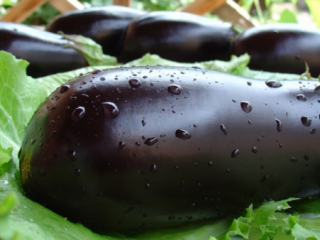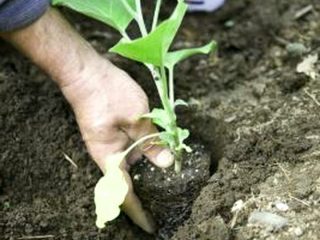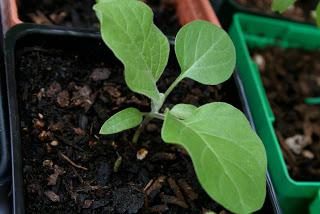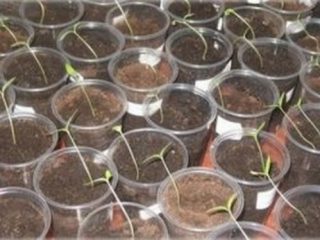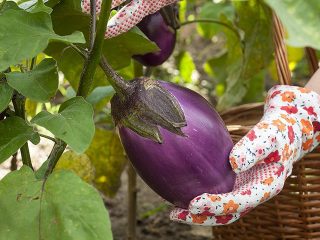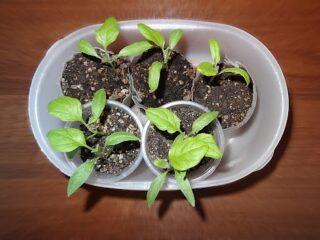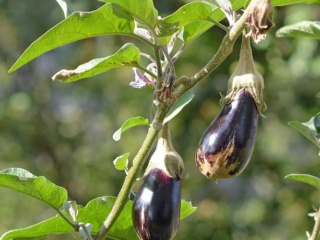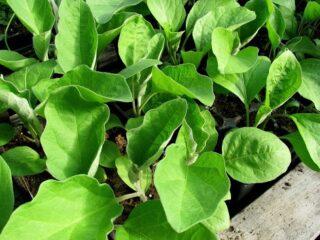Content
Eggplant Andryusha F1 is an early-ripening hybrid from the Partner agricultural company, specializing in breeding new types of vegetables and flowers. According to many gardeners, it is one of the best and shows high productivity even in unfavorable seasons for the crop. Andryusha's eggplant is also valued for its high taste, since its pulp contains a minimal amount of seeds and is never bitter. But in order for the hybrid to show high, stable yields, it is necessary to plant it correctly and follow the recommendations for caring for the plants in the future.
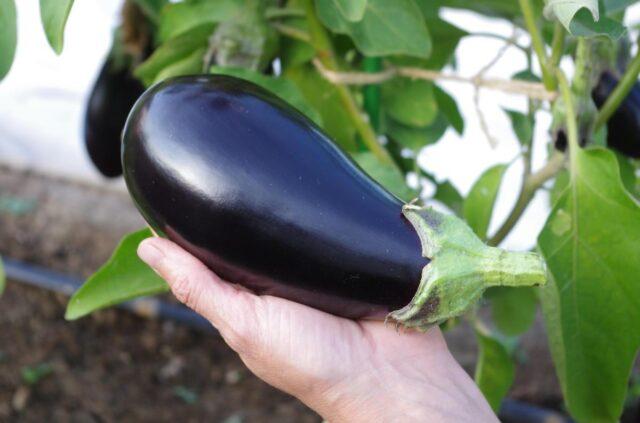
Andryusha eggplant is suitable for open ground and greenhouses
Description and characteristics of eggplant Andryusha F1
The hybrid differs in the appearance of the bushes, fruits and characteristics. To successfully grow it and regularly get a harvest, you need to study these features in advance. This information will also allow you to find out how productive Andryusha’s eggplant is in comparison with other types of crops.
Appearance
The hybrid is characterized by semi-spreading bushes, which are recommended to be formed into three stems, which guarantees high yield and excellent quality of fruits. The height of the plants reaches 90-100 cm. The stems and petioles have an anthocyanin tint.
The plates of the variety are large, shaped like oak leaves, up to 25-30 cm long. They are dark green in color, smooth on top and pubescent on the back side. Large flowers are collected in inflorescences of 2-3 pieces. When opened, the buds have a light purple tint.
When ripe, the fruits of Andryusha eggplant are dark purple in color with a smooth shiny surface. They grow up to 30 cm long and about 7-10 cm in diameter. The average weight of hybrid eggplants ranges from 200-300 g. Their shape is leveled, elliptical, slightly expanded at the top. The skin is thin, evenly colored. The pulp is white with a small amount of seeds. It has an elastic consistency.
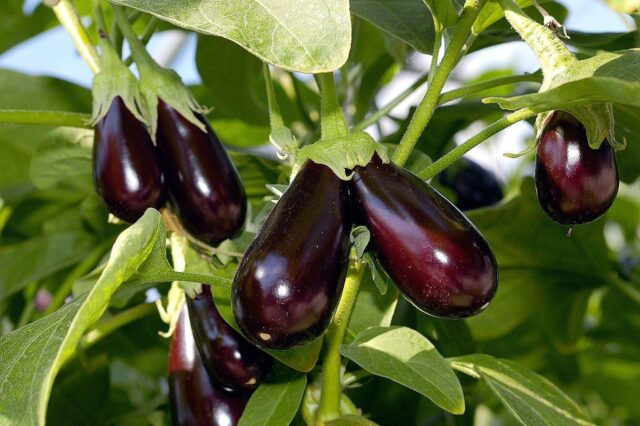
The hybrid has an accelerated growth rate
Taste and purpose
Andryusha eggplant fruits have a pleasant sweetish taste and retain it at any period of ripening. The variety is suitable for preparing caviar, salads, stewing, pickling, and baking. During heat treatment, the pulp retains its consistency.
Ripening time
Andryusha eggplant is a mid-early crop. The duration of its growing season is 100-110 days. The first fruits on the bushes appear in early July, subject to the seedling method of growing the hybrid.
Eggplant productivity Andryusha
Andryusha eggplant is characterized by high productivity, which is due to a long fruiting period of 3.5-4 months. Subject to the rules of care, the volume of harvested fruits per 1 sq. m reaches 7-10 kg.
Growing regions
Andryusha eggplant is suitable for growing in all regions of the country. In the southern and central regions, planting in open ground is recommended, and in the northern regions - in greenhouses. The hybrid tolerates temperature changes well without loss of productivity.
Advantages and disadvantages
Andryusha's eggplant has many advantages, which is confirmed by reviews from gardeners. But it also has certain disadvantages that need to be taken into account.
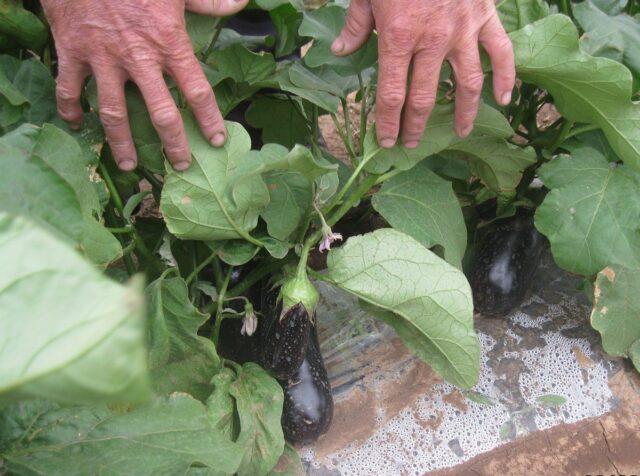
The hybrid has high life potential
Main advantages:
- good yield;
- stable fruiting for four months;
- early ripening;
- unpretentiousness to growing conditions;
- resistance to temperature changes;
- immunity to viral diseases;
- large fruit;
- lack of bitterness;
- low seed;
- accelerated growth rate.
Flaws:
- susceptible to drought;
- needs good lighting;
- requires regular feeding.
Growing seedlings
It is recommended to grow Andryusha eggplant using seedlings. At the time of planting in a permanent place, seedlings should be 65-70 days old. Therefore, it is recommended to sow seeds at home at the end of February, at the beginning of March.
For planting, it is necessary to prepare wide containers up to 10 cm high with drainage holes. They need to be filled with a nutritious soil mixture consisting of turf, sand, peat and humus in a ratio of 2:1:1:1.It is also recommended to additionally add perlite to the substrate at the rate of 0.5 liters per 10 liters of soil and mix thoroughly.
Two days before planting, the soil must be disinfected. To do this, you need to pour it with a solution of Fitosporin, and then dry it slightly. Before planting, moisten the substrate, compact it and level the surface. It is recommended to spread Andryusha eggplant seeds at a distance of 3 cm, and then sprinkle them with a layer of soil 0.5 cm thick. At the end of planting, the soil should be sprayed with a spray bottle, and then cover the container with film or glass.
The container should be moved to a dark place with a temperature of +23-25 °C. And after the emergence of friendly shoots, which happens on the 7-10th day, it needs to be moved to a bright windowsill and the maintenance regime reduced to +20-22 °C. This will help curb excessive growth of the above-ground part and accelerate the development of the root system. Eggplant seedlings require standard care. After the seedlings have grown stronger, they need to be adapted to external conditions and the cover must be completely removed.
At the stage of two true leaves, eggplants must be planted in separate containers to build up a powerful root system. And 10-14 days after this, fertilize with complex mineral fertilizer intended for seedlings.
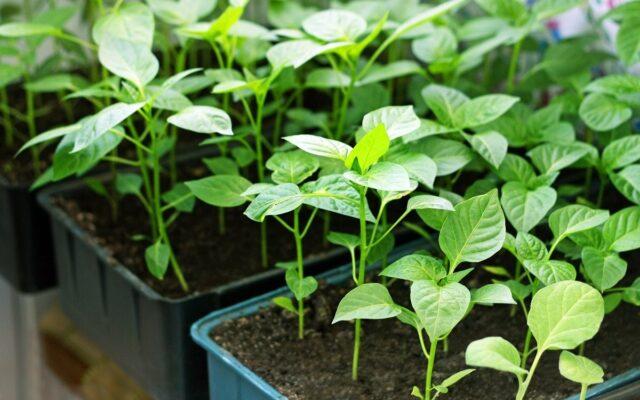
Andryusha eggplant seeds do not require pre-sowing preparation
Transplanting seedlings into the ground
You can plant hybrid seedlings in a greenhouse at the end of April, and in open ground in early, mid-May. To do this, it is necessary that constant warm weather be established at +14-16 °C. In order for the seedlings to tolerate transplantation well and quickly adapt, they must first be hardened off. To do this, you need to start preparing a week in advance.For the first time, take the seedlings outside to a dark place for an hour, and with each subsequent day increase the time interval by another half hour.
Seedlings should be planted in holes with a ball of earth, without deepening them. The recommended planting scheme is four plants per 1 sq. m. After the procedure, water the seedlings generously.
Further care
Eggplant Andryusha needs regular watering in the absence of precipitation for a long time. For irrigation, you need to use settled water at a temperature of +20-22 °C. Watering is carried out at the root at the rate of 1-3 liters for each bush, depending on its stage of development. The frequency of moisturizing is 1-3 times a week. During hot periods, it is recommended to lay mulch at the base of the bushes to prevent excessive evaporation of moisture from the soil.
Caring for a hybrid involves pinching the bushes, which will redirect the plant's forces to the formation of the ovary. You also need to periodically weed the bed with the hybrid and loosen the soil after each watering.
Andryusha's eggplant needs to be fertilized regularly throughout the growing season. The first fertilizing should be carried out ten days after planting the seedlings in a permanent place. For it you can use chicken manure 1:15 or mullein 1:10. In the future, you can use yeast, wood ash, and also use 30 g of superphosphate and 20 g of potassium sulfide per 10 liters of water. The frequency of application of fertilizers is once every two weeks.
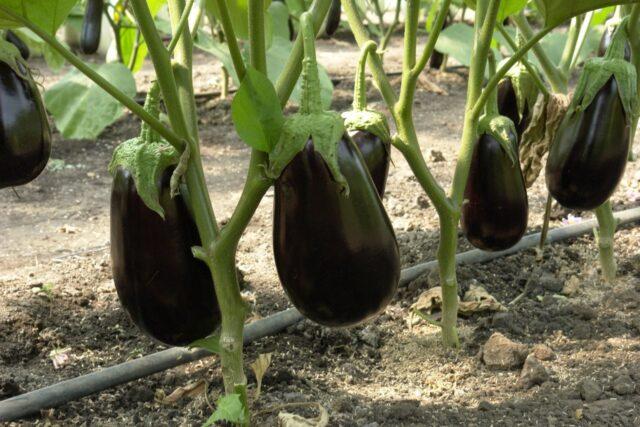
Fertilize after watering or rain
Hybrid Andryusha is susceptible to late blight and various rots. Therefore, it is necessary not to ignore preventive treatments of bushes with fungicides.They need to be carried out three times at intervals of 10-14 days.
Conclusion
Eggplant Andryusha F1 is a new generation hybrid that is deservedly popular among beginners and experienced gardeners. Its distinctive feature is the ease of cultivation and stable yield, with the yield of marketable fruits being 95%. This means that even when growing just a few hybrid bushes, you can provide seven harvests for the entire winter.
Reviews from gardeners about the eggplant variety Andryusha

